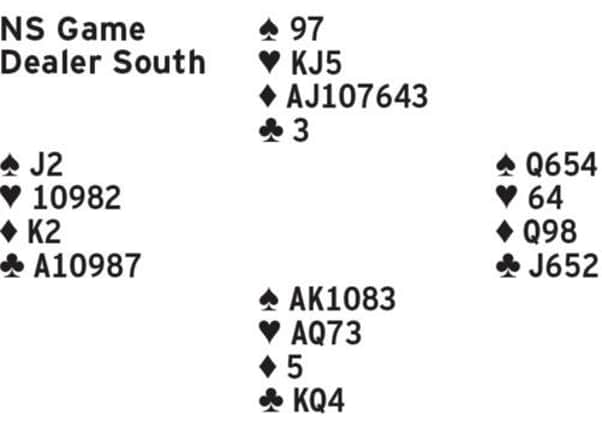Bridge - The Scotsman 22/05/2013


But the singleton in partner’s suit is a worry, and it is not clear where to play. If 2H is not forcing South’s hand is quite unbiddable – he will simply have to guess what to do. With 2H forcing, and unlimited, he can hear more about partner’s hand before making a decision.
Here North has stretched to bid at the two-level because of his seven-card suit, but he rightly felt that 1NT was too much of a distortion. He can now bid 3D, non-forcing, or give false preference to 2S (best not to raise partner’s second suit with three cards unless you are really desperate). Either of these actions shows a minimum two-over-one response. Now South bids 3NT, completing a picture of his strength and distribution, and North is content to pass.
Advertisement
Hide AdAdvertisement
Hide AdA club lead puts 3NT at risk – if East gains the lead to return a club the contract will fail. After winning trick one declarer has eight tricks – two spades, four hearts, the ace of diamonds and a club. He can establish an extra spade trick while keeping East off lead – he crosses to a heart in dummy and runs the nine of spades to West’s jack. If West switches to a low diamond declarer wins the ace and repeats the spade finesse.